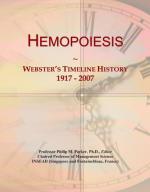|
This section contains 746 words (approx. 3 pages at 300 words per page) |

|
The various different kinds of blood cells have a finite life span in the circulation. Red blood cells last for about 120 days, platelets for 10 days and granulocytes can live for less than 24 hours. Monocytes only circulate from one to three days, but later migrate to the tissue to become the longer-lived macrophages. All these cells are continually replaced by the generative process called hemopoiesis.
Hemopoiesis is an extremely active process. In the adult human, approximately 1010 red blood cells and 4 x 108 white blood cells are produced per day. The principal site of hemopoiesis in the adult is the red marrow within bones, which occupies the medullary cavities of long bones and interstices in the spongiosa of vertebrae, ribs and sternum. Bone marrow occurs in two forms: red marrow, which is active in hemopoiesis, and yellow marrow, which is inactive and consists mainly of adipose cells, giving it its yellow...
|
This section contains 746 words (approx. 3 pages at 300 words per page) |

|


